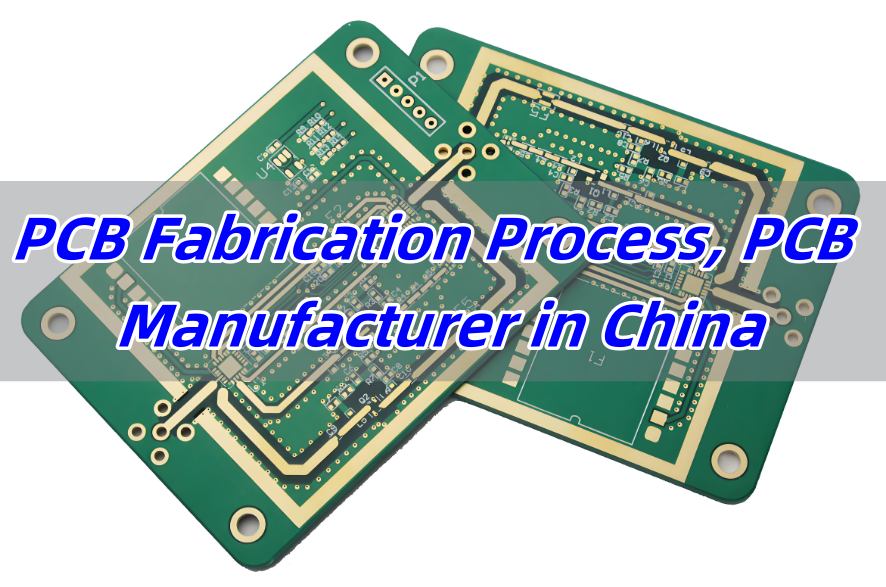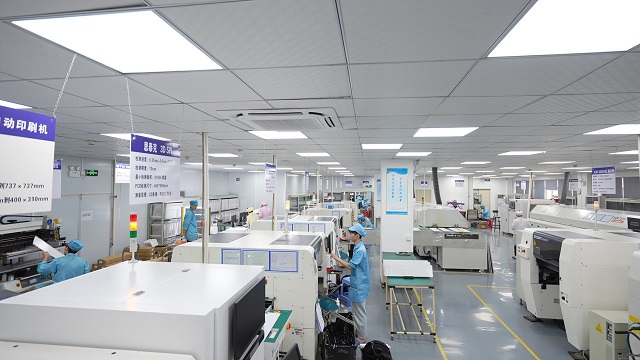Printed circuit boards (PCBs) form the foundation of nearly every electronic product today. But how does a design turn into a finished, functioning circuit board? The answer lies in the detailed PCB fabrication process.

What Is the PCB Fabrication?
The PCB fabrication process refers to the entire set of procedures used to manufacture a bare printed circuit board from your PCB design files âsuch as Gerbers, ODB++, or IPC-2581 formatsâinto an actual bare board ready for assembly. It involves a sequence of tightly controlled steps including inner layer imaging, etching, lamination, drilling, plating, outer layer imaging, surface finishing, and final testing.
The fabrication process must be precise and tightly controlled to avoid defects like layer misalignment, incomplete vias, or inconsistent impedance â all of which can cause failures.
Step-by-Step of the PCB Fabrication Process
Step 1: Engineering Preparation (DFM & CAM)
Before any physical process begins, the fabrication team conducts a Design for Manufacturability (DFM) review. This ensures your files comply with the manufacturerâs capabilities. Then, Computer-Aided Manufacturing (CAM) software analyzes and prepares files for production. This step includes:
- Layer stackup analysis
- Drill file optimization
- Netlist extraction
- Gerber validation
Step 2: Inner Layer Imaging
Each inner copper layer is made from a copper-clad laminate coated with a light-sensitive photoresist. Laser Direct Imaging (LDI) is used to expose the desired circuit pattern onto the photoresist. After UV exposure, unexposed areas are washed away during the developing stage, revealing the copper trace pattern underneath.
Step 3: Etching and Resist Stripping
The exposed copper is chemically removed using an etching solution, such as ammonium persulfate. The hardened photoresist protects the copper that should remain. Once etching is complete, the photoresist is stripped, leaving the final copper trace layout on the inner layers.
Step 4: Inner Layer Inspection and Punching
Automated Optical Inspection (AOI) is performed on every inner layer to detect shorts, opens, or width variations. Once approved, layers are optically punched with precise targets to ensure perfect layer-to-layer registration during lamination.
Step 5: Oxide Coating for Bonding
Before lamination, an oxide treatment (or alternative bonding method like black oxide or oxide alternative) is applied to increase the surface roughness of the copper. This improves resin adhesion and mechanical strength between layers.
Step 6: Lamination
Layers of copper-patterned cores and prepregs are stacked in sequence based on the final stack-up design. Using a lamination press, heat and pressure bond these materials into a multilayer PCB. Any layer shift during this step can lead to catastrophic misalignment, so precise registration is essential.
Step 7: Drilling
Drilling creates the interconnections between layers, including through-holes and vias. High-speed CNC drilling machines are used for standard holes, while laser drilling is employed for microvias in HDI PCBs. After drilling, panels undergo deburring and desmearing to clean the hole walls.
Step 8: Electroless Copper Plating
The drilled holes are non-conductive at first, so a thin layer (~1 ”m) of copper is deposited chemically on the entire panel surface and hole walls. This electroless copper plating is critical for enabling conductivity across the board layers.
Step 9: Outer Layer Imaging and Electroplating
Outer layers are also coated with photoresist and exposed via LDI, defining where copper should remain. After exposure and development, the board is electroplated with copper to build up the outer traces and fill via holes. A tin plating is then applied as a temporary etch resist.
Step 10: Outer Layer Etching and Tin Stripping
The exposed areas (not protected by tin) are etched to remove excess copper. Once the etching is completed, the tin is chemically stripped, leaving behind the precise copper pattern for the outer layers.
Step 11: Solder Mask, Silkscreen, and Surface Finish
The board is coated with solder mask to insulate and protect copper traces while preventing solder bridges during assembly. Then, silkscreen (legend) is printed to mark component reference designators. Finally, a surface finish is applied to all exposed pads to improve solderability and protect against oxidation. Typical finishes include:
- ENIG (Electroless Nickel Immersion Gold)
- HASL (Hot Air Solder Leveling)
- Immersion Silver
- Hard Gold Plating
- Soft Gold Plating
- OSP (Organic Solderability Preservative)
Step 12: Electrical Testing
All fabricated boards undergo electrical testing to validate circuit continuity and isolation. This includes:
- Open/short detection
- Impedance testing (for high-speed circuits)
Test methods like flying probe or bed-of-nails based on volume and complexity
These tests confirm that the final PCB functions exactly as designed.
Step 13: Profiling, Routing, and V-Scoring
The final step in the PCB fabrication process is mechanical profiling. Boards are separated from the panel using CNC routing, V-cutting, or punching, depending on panelization methods. This step defines the exact outer dimensions of each PCB, matching the customerâs mechanical drawing.
Quality Control in the PCB Fabrication Process
Quality control (QC) is a vital part of the PCB fabrication process, ensuring that every board meets design specifications and performance standards. At each stage of production, rigorous testing and inspections are carried out to prevent defects and maintain reliability.
Key quality control practices include:
- Design Rule Checks (DRC): Performed during CAM to validate trace width, spacing, hole size, and stack-up consistency before fabrication begins.
- Automated Optical Inspection (AOI): Used after inner layer imaging and etching to catch shorts, opens, and trace issues.
- X-ray Inspection: Applied in multilayer and HDI boards to verify layer registration and detect internal via or plating problems.
- Solder Mask Registration Check: Ensures that the solder mask aligns properly with the copper pads to avoid bridging.
- Surface Finish Evaluation: Verifies the integrity and thickness of ENIG, HASL, or OSP finishes.
- Electrical Testing (E-Test): Confirms electrical connectivity of all nets and absence of shorts through flying probe or bed-of-nails testing.
- Final Visual Inspection: Technicians visually inspect the board for cosmetic defects like solder mask smearing, silkscreen blurring, or mechanical damage.

At Best Technology, we implement a 100% inspection rate before shipping, including impedance control and dimensional verification, supported by ISO9001, ISO13485, IATF16949, and AS9100D certifications.
Common Challenges and How to Avoid Them in PCB Fabrication
The PCB fabrication process involves over a dozen tightly coordinated steps, and even minor deviations can lead to functional failures or yield loss. Understanding the most common challenges â and how to prevent them â is crucial for design engineers and buyers alike.
1. Layer Misalignment
During lamination, even slight misregistration between inner layers can cause via breakout or impedance drift. This is often due to poor tooling, inaccurate punching, or thermal distortion. To avoid this, manufacturers must use optical punching systems and tightly control temperature profiles during lamination.
2. Inconsistent Plating in Through-Holes
Uneven plating thickness can result in poor conductivity or cracking under thermal stress. This typically stems from incorrect bath chemistry or poor hole preparation. Electroless copper plating, followed by well-regulated electrolytic plating, is essential to create reliable interconnects.
3. Solder Mask Misalignment
If the solder mask isnât accurately registered, it can expose traces or cover pads, leading to solder bridging or poor wetting. Using laser direct imaging (LDI) for solder mask improves accuracy significantly.
4. Etching Defects
Over-etching narrows traces; under-etching leaves shorts between conductors. These issues often arise from aged chemistry or poor agitation. Manufacturers must maintain strict control over etching parameters and regularly calibrate their lines.
5. Warpage in Multilayer Boards
High-layer count PCBs or boards with uneven copper distribution may warp during lamination or reflow. This is mitigated by symmetrical stack-up design and consistent copper balancing.
The best way to avoid these issues is to partner with a manufacturer who offers early-stage engineering review, real-time process monitoring, and full transparency during production.
How to Choose a Reliable PCB Fabrication Partner?
1. Your manufacturer must be able to support your design complexity â whether it’s HDI, controlled impedance, via-in-pad, or metal-core PCBs. Check their minimum trace/space, layer count, and material compatibility before proceeding.
2. An experienced fabrication partner doesnât just produce what you send. They should actively review your design, feedback EQ (engineer question) file, flag manufacturability concerns, and suggest layout improvements. Free DFM review, stack-up optimization, and impedance modeling are key indicators of a capable supplier.
3. Leading manufacturers use MES system to track each step of your order â from raw material to final inspection.
4. Ask your PCB manufacturer: Can you reach an engineer when issues arise? Do you get weekly updates or have to follow up multiple times? A strong partner maintains open, proactive communication, especially for urgent or high-reliability projects.
5. Choose a PCB fabrication partner who can handle both quick-turn prototypes and volume production.
Best Technology is a leading PCB manufacturer in China, we help customers from prototyping to mass production with:
✅ 24-hour quick turn
✅ Competitive pricing
✅ Full traceability using MES systems
✅ Engineering support for stack-up, impedance, and DFM
Whether youâre designing a six-layer communication board or a single-layer aluminum LED module, we can support every stage of your PCB fabrication process.

Frequently Asked Questions (FAQ)
1. Whatâs the difference between PCB fabrication and PCB assembly?
Fabrication creates the bare board; assembly mounts components onto it.
2. How long does the PCB fabrication process take?
Standard lead times are 5â7 days, but quick-turn options (24â48 hours) are available.
3. Which surface finish should I choose for my PCB?
ENIG is preferred for SMT and fine-pitch components; HASL works well for through-hole.
4. Can I request a custom stack-up for impedance control?
Yes, Best Technology supports custom stack-ups for RF, high-speed, and HDI boards.
5. How much does the PCB fabrication process cost?
Costs depend on layer count, board size, materials, surface finish, and lead time.


